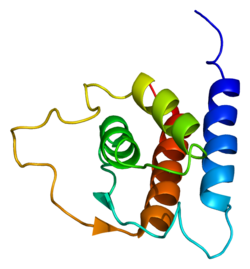Isolating The Source of Interleukin-25 In Common Respiratory Disorders
The latest discovery from the Perelman School of Medicine at the University of Pennsylvania examined the mechanisms behind how the immune system responds to common sinus infections and asthma attacks.

This discovery may explain why affected individuals develop these issues in the first place with hopes to create an effective therapeutic strategy. More specifically, investigators isolated the source of the inflammatory cytokine Interleukin-25 (IL-25), which is an immune molecule that recruits a subset of inflammatory cells. Most commonly diagnosed respiratory disorders, such as chronic rhinosinusitis and asthma, have been tied to elevated levels of IL-25, but the origins remain unknown.
Now, the source of IL-25 is believed to be a solitary chemosensory cell (SCC). In tissue samples that are non-inflamed, SCCs compose one percent of human cells lining the sinuses. But, when the researchers examined human nasal polyps, the number of SCCs that lining the polyp tissue have strikingly increased. Furthermore, when these cells were treated with inflammatory molecule Interleukin-13 (IL-13), which has also been involved in driving nasal polyp formation and asthma, it stimulated the expansion of the SCCs and increased the production of IL-25. "The more of these cells are present, the more likely the body will mount an inappropriate, exaggerated immune response due to elevated levels of IL-25. The body ends up in a vicious cycle, and so it never goes back to its baseline," explains the study's senior author Noam A. Cohen, MD, Ph.D., director of Rhinology Research at Penn.

The researchers also discovered that IL-25 is not relapsed in tissues, but relapsed in the mucus. This means that IL-25 has to come from the mucus before it reaches the tissue to exert its effects. Otherwise, IL-25 remaining in the mucus site will be excreted out of the body through sneezing. "We can measure levels of IL-25 in the mucus, so it's possible this can be an indicator of who will develop conditions like polyps or asthma," adds the study's lead author Michael Kohanski, MD, Ph.D. "Also, if we can bind up IL-25 before it reaches the tissue, we may be able to prevent the inflammation altogether." SCC's secreting IL-25 is fairly a normal process, and therefore it is not something that can be prevented. "Rather, we want to control the excessive concentrations found in polyps in a targeted way, perhaps with a nasal spray," explains Cohen.








